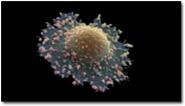2.6 Summary
Receptors comprise a limited number of structural motifs, which determine binding affinity and specificity of receptor–ligand complexes. Some ligands bind to several receptors and some receptors bind to several ligands.
Acetylcholine is a good example of a ligand with two structurally different kinds of receptor. Nicotinic receptors are ion channels, which are found predominantly in skeletal muscle, and are stimulated by nicotine. Nicotinic receptor antagonists include the toxins α -bungarotoxin and tubocurarine. Acetylcholine binds at two sites within the channel. Muscarinic receptors, in contrast, are 7TM G protein-coupled receptors, found (for example) in cardiac muscle. Muscarine acts as an agonist, whereas atropine acts as an antagonist. Acetylcholine binds in the core region (Table 1) of the transmembrane helical segments.
Adrenalin, however, has a range of structurally related 7TM G protein-coupled receptors, with different tissue distributions and different affinities for numerous agonists and antagonists. Adrenalin, like acetylcholine, binds in the core region of the receptor, though other GPCRs can be activated in a variety of ways.
Mechanisms for receptor activation are varied and include conformational changes (ion-channel receptors and 7TM), homo- or heterodimerization (receptors with intrinsic enzymatic activity and recruiter receptors) or even proteolysis.
For most 7TM receptors (the exception being the Frizzled class of 7TM receptors), conformational change on ligand binding activates associated cytoplasmic G proteins. Hence, they are called ‘G protein-coupled receptors’.
Receptors with intrinsic enzymatic activity include receptor tyrosine kinases, receptor serine–threonine kinases, receptor tyrosine phosphatases, and receptor guanylyl cyclases. Most RTKs are activated by dimerization on ligand binding, leading to autophosphorylation of the cytoplasmic portion of the receptor. Phosphorylated tyrosine residues serve as docking sites for SH2-containing signalling proteins, which also recognize sequence-specific flanking motifs.
Dimerization of recruiter receptors facilitates the interaction between the membrane-bound receptor and cytosolic proteins with intrinsic enzymatic activity such as kinases.
Receptors can be inactivated by removal of the ligand, or by receptor desensitization, which can be by inactivation, by sequestration or by degradation of the receptor.
Some signalling molecules can diffuse across the plasma membrane, and so have intracellular, rather than cell surface receptors. Small hydrophobic ligands such as steroid hormones bind to members of the nuclear receptor group, which undergo conformational change and bind to specific DNA sequences, stimulating transcription of target genes.
